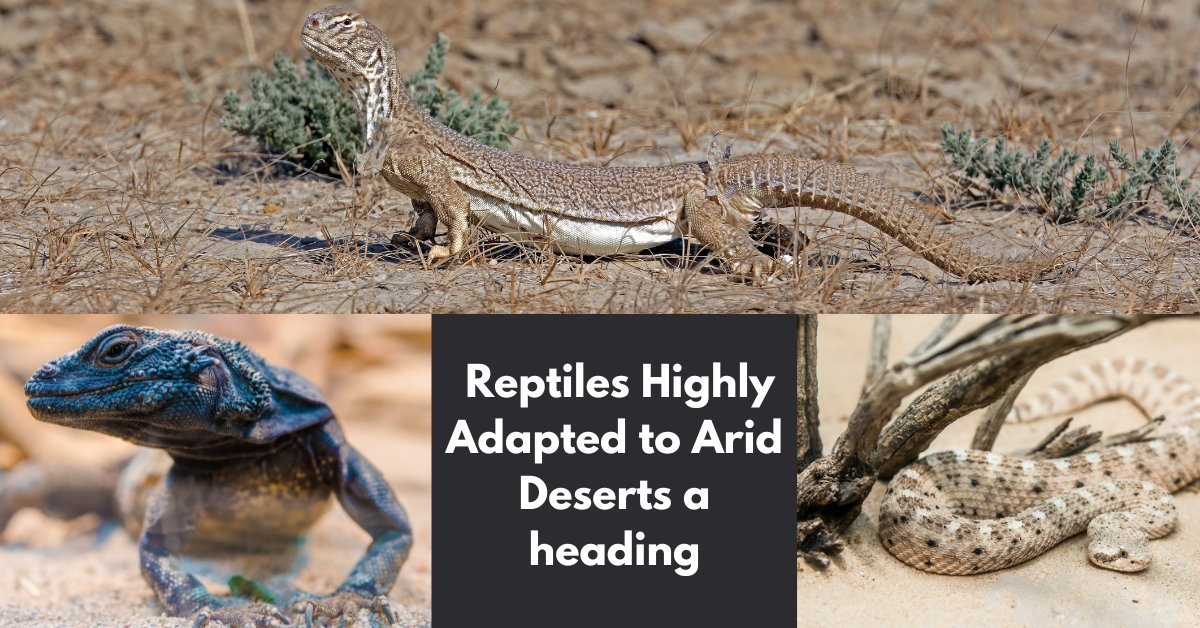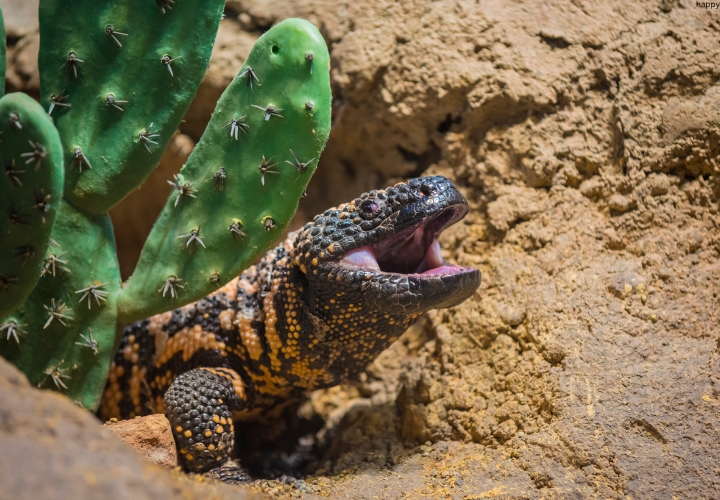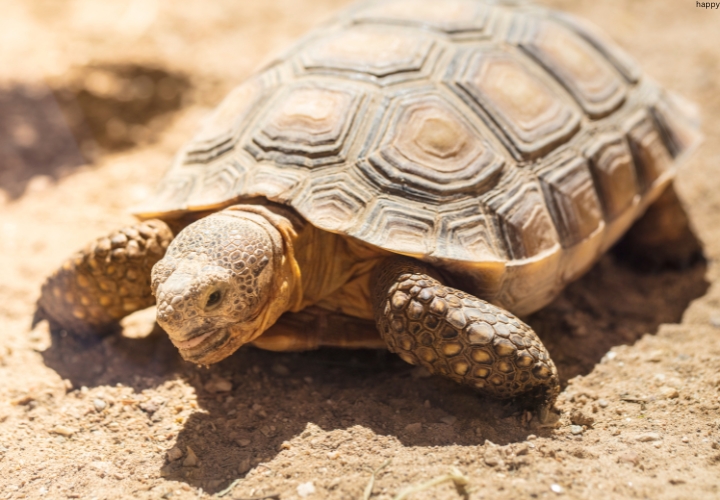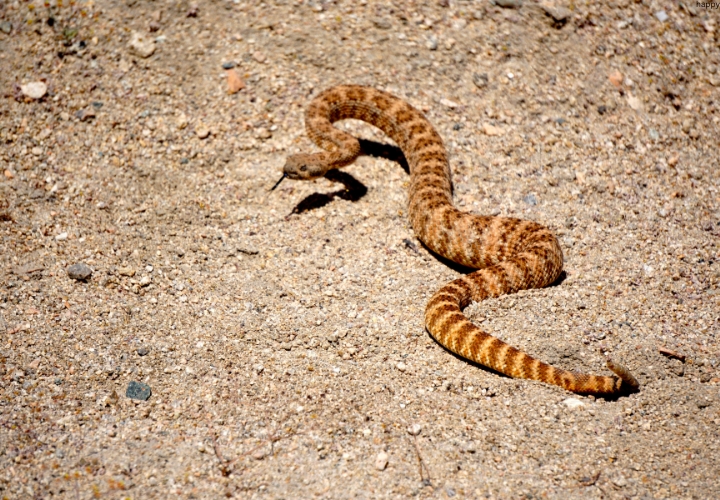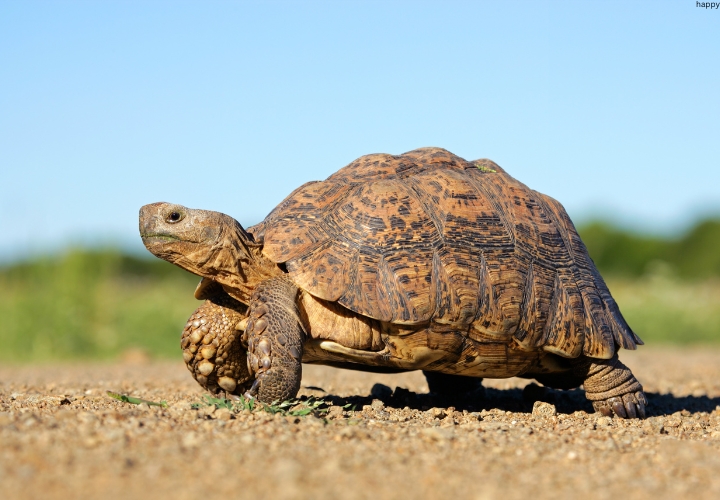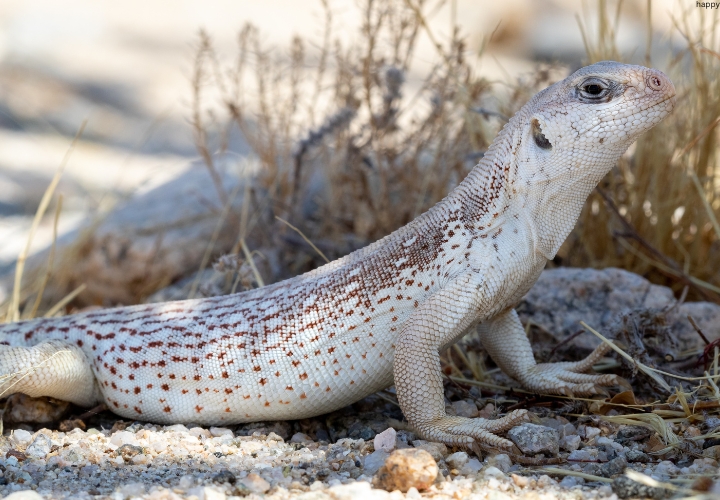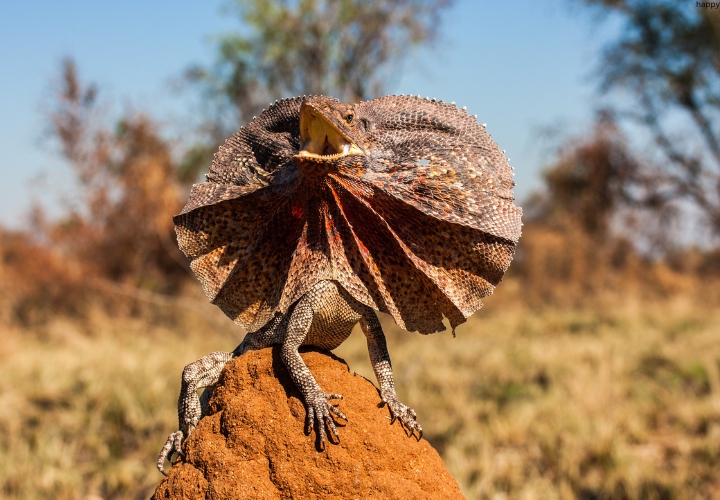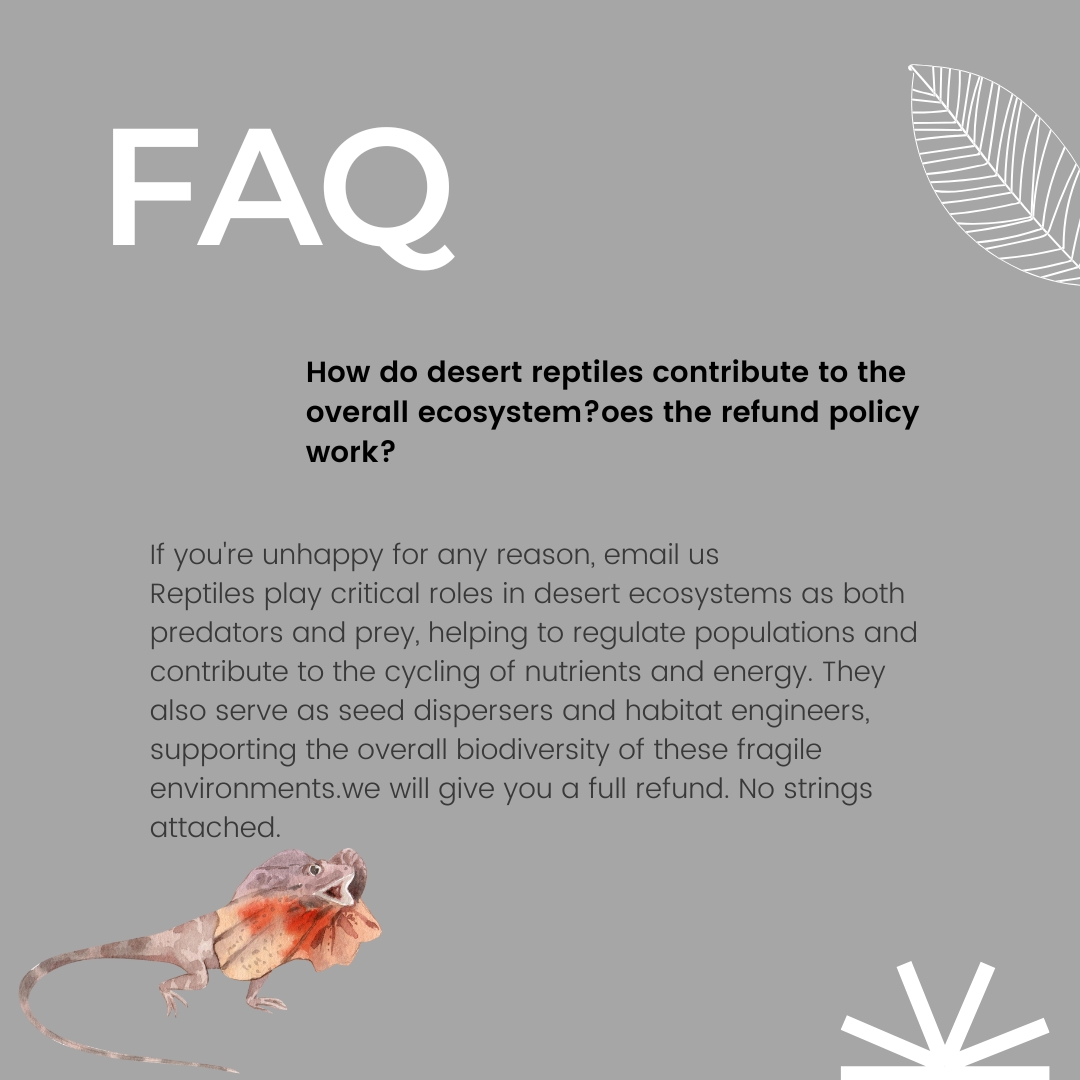Deserts present formidable challenges, yet a remarkable diversity of reptiles has evolved specialized adaptations to thrive in these harsh, unforgiving landscapes.
This article explores the key adaptations that enable 20 desert reptile species to regulate temperature, conserve water, blend into their surroundings, and exploit limited resources.
From the Gila monster to the Namib snake, each species showcases unique traits that allow it to survive and integrate into the delicate balance of desert ecosystems.
Key Takeaways
- Desert reptiles have evolved a remarkable array of adaptations to thrive in the harsh, arid conditions of desert environments, including mechanisms for:
- Thermoregulation to cope with extreme temperatures
- Water conservation to survive in drought-prone habitats
- Camouflage and coloration to blend seamlessly into the desert landscape
- Burrowing and shelter-seeking behaviors to escape the elements
- Specialized feeding strategies to locate and utilize limited resources
- The article profiles 20 diverse desert reptile species, each showcasing unique adaptations that allow them to survive and thrive in their challenging environments.
- Reptiles play a critical role in the delicate balance of desert ecosystems, serving as both predators and prey, seed dispersers, and habitat engineers.
- Conserving desert reptiles and their habitats is crucial for maintaining the ecological integrity of these fragile environments, which face threats from human activities, climate change, and other factors.
- Staying connected with the latest research and conservation efforts through resources like the provided newsletter can help raise awareness and support the protection of remarkable desert reptiles.
Adaptations of Desert Reptiles
Reptiles are a captivating class of organisms that have evolved remarkable adaptations to thrive in diverse natural environments, from lush tropical forests to the harshest arid deserts.
This magical world of ecological integration and biodiversity showcases the incredible resilience and specialized traits of these cold-blooded creatures.
Desert ecosystems present some of the most challenging conditions for any living being, with scorching temperatures, limited water availability, and sparse vegetation.
Yet, a remarkable array of reptile species have mastered the art of survival in these extreme environments, seamlessly integrating into the delicate balance of desert life.
In this comprehensive exploration, we delve into the key adaptations that enable reptiles to conquer the arid domain, examining the myriad ways these animals have evolved to conserve water, regulate their body temperature, and exploit the resources available in their harsh surroundings.
From the swift and camouflaged lizards to the venomous and constricting snakes, each desert reptile showcases a unique set of specialized traits that allow them to thrive.
1. Thermoregulation: Adapting to Extreme Temperatures
One of the primary challenges faced by reptiles in desert environments is the need to regulate their body temperature effectively.
With scorching daytime temperatures and frigid nights, these cold-blooded animals must possess the ability to adapt their internal thermostats to the fluctuating conditions.
Reptiles in arid deserts have evolved several mechanisms to maintain an optimal body temperature.
Many species, such as the Gila monster and the desert iguana, utilize behavioral adaptations like seeking shade, burrowing underground, or basking in the sun to absorb or dissipate heat as needed.
The specialized scales and skin of desert reptiles also play a crucial role in their thermoregulation, with some species exhibiting reflective properties to minimize heat absorption.
2. Water Conservation: Surviving in Drought-Prone Environments
Water scarcity is another major obstacle that desert reptiles must overcome. These animals have evolved a range of adaptations to minimize water loss and efficiently utilize the limited moisture available in their habitat.
Many desert reptiles, such as the desert tortoise and the Namib sand snake, have developed the ability to store water in specialized body parts, like the bladder or the tail.
Others, like the sidewinder rattlesnake and the dabb lizard, have evolved the capacity to extract water from their prey or the vegetation they consume.
Further more, the thick, waxy scales and the reduced surface area-to-volume ratio of some desert reptiles help them conserve precious moisture.
3. Camouflage and Coloration: Blending into the Desert Landscape
Effective camouflage is a vital adaptation for desert reptiles, allowing them to blend seamlessly into their surroundings and evade predators or prey.
The diverse patterns, colors, and textures exhibited by these animals are the result of evolutionary adaptations to the desert’s rugged terrain and sparse vegetation.
Species like the horned lizard, the rock agama, and the Saharan horned viper have developed intricate patterns and hues that mimic the sand, rocks, and foliage of their environment.
Others, such as the frilled lizard and the desert night snake, can even change their coloration to match their immediate surroundings, further enhancing their camouflage capabilities.
4. Burrowing and Shelter Seeking: Escaping the Elements
To cope with the extreme temperatures and the lack of water in the desert, many reptiles have evolved the ability to burrow underground or seek refuge in sheltered spaces.
This behavior not only helps them regulate their body temperature but also provides a crucial source of moisture and protection from predators.
The desert tortoise, for example, constructs elaborate burrow systems that can extend several meters underground, allowing it to escape the scorching heat and conserve water.
Similarly, the sidewinder rattlesnake and the Namib sand snake utilize their specialized body shapes and sand-adapted movements to effortlessly burrow into the desert sand, creating temporary shelters.
5. Feeding Strategies: Adapting to Resource Scarcity
Obtaining adequate nutrition in the resource-scarce desert environment is another challenge that reptiles must overcome. These animals have developed a range of feeding strategies to locate, capture, and digest their prey effectively.
Some desert reptiles, like the Gila monster and the desert monitor, are opportunistic feeders, taking advantage of a diverse range of prey, from small rodents and birds to eggs and insects.
Others, such as the horned lizard and the dabb lizard, have specialized in feeding on specific desert plants and insects, taking advantage of the unique resources available in their habitat.
Many desert reptiles have also evolved the ability to go for extended periods without food, utilizing their stored body fat and water reserves to survive during times of scarcity. This adaptation is particularly crucial for species that inhabit the most arid regions of the desert.
10 Desert-Adapted Reptile Species
Gila Monster
The Gila monster is known for its thick, bumpy skin that helps minimize water loss. It has the ability to store fat and water in its tail, which allows it to survive for extended periods without access to water.
Further more, the Gila monster’s slow, lethargic movements help conserve energy in the harsh desert environment.
Horned Lizard
The horned lizard has developed a remarkable camouflage coloration that blends seamlessly with the desert sand and rocks. This adaptation helps the lizard evade both predators and prey.
Moreover, the horned lizard can even squirt blood from its eyes as a defensive mechanism, startling potential threats.
Desert Tortoise
The desert tortoise has a domed shell and thick skin that help it retain moisture in the arid desert. It has also evolved the ability to burrow deep underground, escaping the extreme temperatures on the surface and conserving precious water.
The tortoise’s specialized digestive system allows it to extract water from the desert plants it consumes.
Sidewinder Rattlesnake
The sidewinder rattlesnake has developed a specialized body shape and movement patterns that allow it to effectively burrow into the desert sand.
This adaptation helps the snake escape the heat and conserve water. The sidewinder also has heat-sensing pits that help it locate warm-blooded prey, and it has the ability to survive for extended periods without access to water.
Spiny-Tailed Lizard
The spiny-tailed lizard is protected by thick, armored scales that shield it from the harsh desert elements and potential predators.
It can also store fat in its tail to provide energy during times of scarcity. This lizard is well-adapted for burrowing and hiding in the rocky crevices of the desert.
Desert Iguana
The desert iguana has evolved reflective skin that helps regulate its body temperature. It utilizes various behaviors, such as basking in the sun or seeking shade, to maintain an optimal body warmth.
Further more, the desert iguana has adaptations that allow it to conserve water by reducing evaporation through its skin.
Saharan Horned Viper
The Saharan horned viper has developed a camouflage coloration that blends seamlessly with the desert sand, allowing it to ambush unsuspecting prey.
It also has heat-sensing pits that help it detect warm-blooded animals, which it can subdue with its potent venom.
Arabian Cobra
The Arabian cobra can raise its iconic hood and sway back and forth to intimidate potential predators. It has also evolved powerful venom that efficiently subdues and digests its prey.
This snake is adapted for burrowing and hiding in the rocky habitats of the desert.
Frilled Lizard
The frilled lizard can flatten and spread its large neck frill as a defense mechanism to startle and deter predators.
It has also developed specialized climbing adaptations to navigate the trees and rocky terrain of its desert environment. The frilled lizard can even change its coloration to blend in with its surroundings.
Desert Night Snake
The desert night snake has a camouflage coloration that blends seamlessly with the desert substrate, allowing it to remain hidden from both predators and prey.
It has heat-sensing pits that help it detect warm-blooded animals, which it hunts and consumes during the night.
These are just a few examples of the remarkable desert reptiles that have evolved specialized adaptations to thrive in the harsh arid environments.
Each species showcases a unique set of traits that enable it to survive and integrate into the delicate desert ecosystem.
The Critical Role of Reptiles in Desert Ecosystems
Reptiles play a crucial role in the delicate balance of desert ecosystems, serving as both predators and prey, and contributing to the overall biodiversity and ecological functioning of these arid environments.
As predators, desert reptiles help regulate the populations of small rodents, birds, insects, and other prey species, maintaining a healthy balance within the food web.
Their feeding strategies, such as the Gila monster’s opportunistic hunting or the horned lizard’s specialized diet, contribute to the efficient cycling of nutrients and energy in the desert.
Many desert reptiles also serve as important seed dispersers, helping to propagate the sparse vegetation that provides essential resources for other desert-dwelling organisms.
Further more the burrowing and shelter-seeking behaviors of species like the desert tortoise and the sidewinder rattlesnake create habitats and microenvironments that benefit a wide range of desert flora and fauna.
However, the survival of desert reptiles is not without its challenges. These animals face a multitude of threats, including habitat destruction, climate change, invasive species, and human-wildlife conflicts.
Conserving and protecting the diverse array of desert reptiles is crucial for maintaining the ecological integrity of these fragile ecosystems.
Insights and Conclusion
The remarkable adaptations of desert reptiles showcase the evolutionary ingenuity of these cold-blooded creatures, and their ability to thrive in some of the most inhospitable environments on Earth.
From the Gila monster’s water-conserving skin to the frilled lizard’s impressive defensive display, each desert reptile species embodies a unique set of specialized traits that allow them to survive and flourish in the arid desert landscape.
As we delve deeper into the world of desert reptiles, we gain invaluable insights into the complex web of life that exists in these harsh yet captivating environments.
By understanding the critical roles these animals play in maintaining the ecological balance, we can develop more effective conservation strategies to protect these remarkable creatures and the fragile desert ecosystems they call home.
Stay connected with the creatures and cacti of the desert by signing up for our e-newsletter today. Discover more about the fascinating adaptations and importance of desert reptiles, and join us in our mission to preserve these ecological gems for generations to come.

